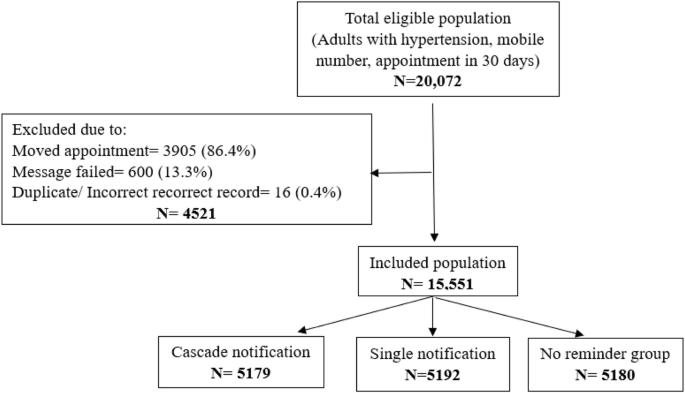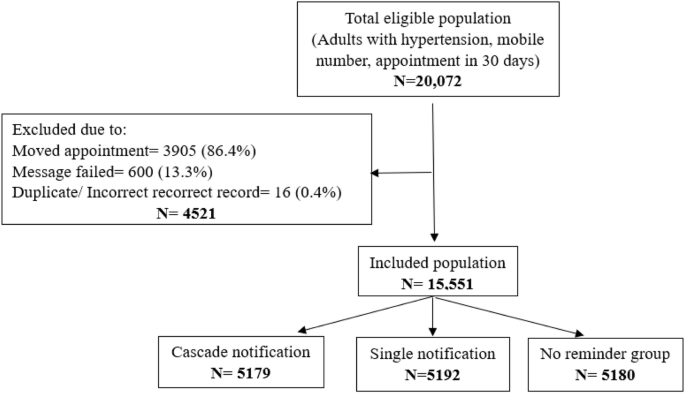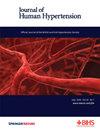Text messaging to improve retention in hypertension care in Bangladesh
IF 2.7
4区 医学
Q2 PERIPHERAL VASCULAR DISEASE
引用次数: 0
Abstract
Visit non-attendance is a common barrier to hypertension control in low and middle-income countries (LMICs). We aimed to evaluate the effectiveness of mobile text messaging in improving visit attendance among patients with hypertension in primary healthcare facilities in Bangladesh. A randomized A/B testing study was conducted with two patient groups: (1) patients regularly attending visits (regular patients) and (2) patients overdue for their follow-up clinic visit (overdue patients). Regular patients were randomized into three groups: a cascade of three text reminders, a single text reminder, or no text reminder. Overdue patients were randomized into two groups: a single text reminder or no text reminder. 20,072 regular patients and 12,708 overdue patients were enrolled. Among regular patients, visit attendance was significantly higher in the cascade reminder group and the single reminder group compared to the no reminder group (78.2% and 76.6% vs. 74.8%, p < 0.001 and 0.027, respectively). Among overdue patients, the single reminder group had a 5.8% higher visit attendance compared to the no reminder group (26.5% vs. 20.7%, p < 0.001). The results remained consistent in multivariable analysis; adjusted prevalence ratio (PR) was 1.04 (95% CI 1.02–1.06) for the cascade reminder group and 1.02 (95% CI 1.00–1.05) for the single reminder group among regular patients. The adjusted PR for the single reminder group vs. the no reminder group among overdue patients was 1.23 (95% CI 1.15–1.33). Text message reminders are an effective strategy for improving retention of patients in hypertension treatment in LMICs, especially for patients overdue to care.


通过短信提高孟加拉国高血压患者的就医率。
不就诊是中低收入国家控制高血压的常见障碍。我们旨在评估手机短信在提高孟加拉国初级医疗机构高血压患者就诊率方面的效果。我们对两组患者进行了随机 A/B 测试研究:(1) 定期就诊的患者(定期患者)和 (2) 逾期复诊的患者(逾期患者)。定期就诊患者被随机分为三组:一连发送三条短信提醒、一条短信提醒或无短信提醒。逾期患者被随机分为两组:单条短信提醒或无短信提醒。共有 20,072 名定期就诊患者和 12,708 名逾期就诊患者登记在册。在定期就诊的患者中,串联提醒组和单一提醒组的就诊率明显高于无提醒组(78.2% 和 76.6% vs. 74.8%,p<0.05)。
本文章由计算机程序翻译,如有差异,请以英文原文为准。
求助全文
约1分钟内获得全文
求助全文
来源期刊

Journal of Human Hypertension
医学-外周血管病
CiteScore
5.20
自引率
3.70%
发文量
126
审稿时长
6-12 weeks
期刊介绍:
Journal of Human Hypertension is published monthly and is of interest to health care professionals who deal with hypertension (specialists, internists, primary care physicians) and public health workers. We believe that our patients benefit from robust scientific data that are based on well conducted clinical trials. We also believe that basic sciences are the foundations on which we build our knowledge of clinical conditions and their management. Towards this end, although we are primarily a clinical based journal, we also welcome suitable basic sciences studies that promote our understanding of human hypertension.
The journal aims to perform the dual role of increasing knowledge in the field of high blood pressure as well as improving the standard of care of patients. The editors will consider for publication all suitable papers dealing directly or indirectly with clinical aspects of hypertension, including but not limited to epidemiology, pathophysiology, therapeutics and basic sciences involving human subjects or tissues. We also consider papers from all specialties such as ophthalmology, cardiology, nephrology, obstetrics and stroke medicine that deal with the various aspects of hypertension and its complications.
 求助内容:
求助内容: 应助结果提醒方式:
应助结果提醒方式:


